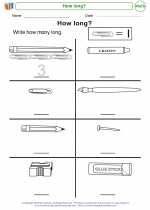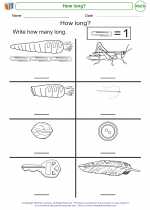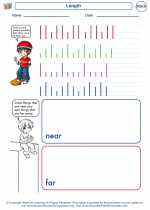How Long?
In kindergarten, students start learning about measurements, including the concept of length. Understanding "how long" something is involves comparing the size of objects or distances. Here are some key points to cover when teaching the concept of length:
1. Comparing Lengths
Kindergarteners are introduced to the concept of comparing the lengths of different objects. They learn to use comparative terms such as "longer," "shorter," and "taller" to describe the lengths of objects. This can be taught using hands-on activities and visual aids to help students grasp the idea.
2. Non-Standard Units
At this stage, students are introduced to non-standard units of measurement, such as using paper clips, building blocks, or their own hands to measure the length of objects. They learn that different objects can be measured using different non-standard units and begin to understand the concept of relative size.
3. Measuring with Standard Units
While kindergarteners may not be introduced to specific standard units of measurement like inches or centimeters, they can start to understand the idea of using a standard unit to measure length. This can be done through simple activities where they use a ruler or measuring tape to measure the length of objects in the classroom.
4. Estimation
Kindergarten students can also begin to develop their estimation skills when it comes to length. They learn to make educated guesses about the length of objects before measuring them using non-standard or standard units. This helps them develop a sense of spatial awareness and measurement.
5. Practical Application
It's important to provide real-life examples of length measurement that kindergarteners can relate to. For example, measuring the length of a classroom table, comparing the lengths of pencils, or estimating the length of a hallway can help make the concept more tangible for students.
By introducing these concepts in a hands-on and interactive way, kindergarteners can start to develop a foundational understanding of "how long" and lay the groundwork for more advanced measurement skills in the future.
.◂Math Worksheets and Study Guides Kindergarten. How long?

 Coloring Worksheet
Coloring Worksheet
 Worksheet/Answer key
Worksheet/Answer key
 Worksheet/Answer key
Worksheet/Answer key
